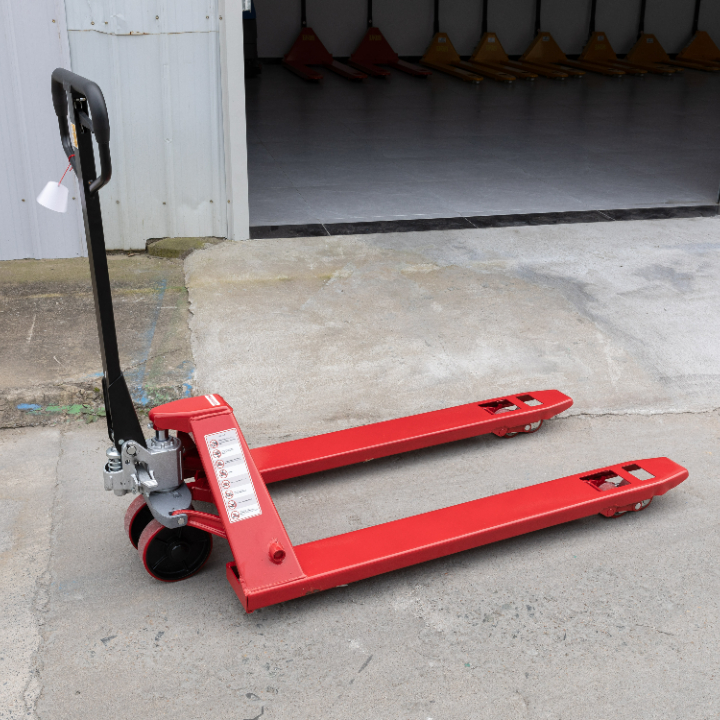A hand truck is a lifting tool widely used in warehouses, cargo handling and logistics industries. It consists of a body, a fork arm and casters, and its unique design makes operation more convenient and efficient.
Friends who have paid special attention to hand trucks should know that there is such a feature of the casters of hand trucks, that is, its front wheel size is large and the rear wheel size is small. What is the purpose of this size design? What principle should the design of the front and rear wheels of a hand truck follow?
01Stability considerations
The design of the hand truck casters being larger in the front and smaller in the back is for stability considerations. The front of the hand truck carrying items is usually heavier than the back because the goods are placed at the front of the fork arm. In order to maintain balance, forklift manufacturers have made a conscious design to make the front wheels larger, the rear wheels smaller, and the center of gravity located at the front. This can increase the stability of the hand truck and reduce the risk of bumps and loss of control during operation.
02Operability
The design of the large front and small back casters of the hand truck makes turning more flexible. Hand trucks usually need to be operated in warehouses or narrow places to complete the task of moving and stacking items in a limited space. The large front and small back caster design makes the hand truck easier to turn, reducing the difficulty of the operator in a narrow space. The large front and small back caster design improves the maneuverability and controllability of the hand truck, allowing the operator to flexibly cope with various work scenarios.
03Load Distribution
The reason why the casters of a hand truck are larger at the front and smaller at the back also involves the issue of load distribution. The load-bearing capacity of a hand truck is determined by its design and structure. To ensure the stability and safety of the forklift, the load needs to be properly distributed on the fork arm. By concentrating the weight at the front, the hand truck can better share the load, provide effective support, and ensure that the goods are balanced and not tilted during transportation.

What is the principle of application??
The caster design of the hand truck utilizes the Ackerman steering principle. The so-called Ackerman steering principle mainly refers to the fact that on a vehicle, the front and rear wheels use different steering radii to achieve smoothness. The design of the hand truck caster with a large front and a small rear allows the front wheel to turn a larger angle, so the hand truck can achieve a smaller turning radius. This feature makes it extremely advantageous for the hand truck to perform various steering operations in a small space.
At the same time, the smaller size of the rear wheel can also provide a certain stability for the hand truck, reducing the risk of the hand truck rolling over. The Ackerman steering principle is the main reason why the hand truck caster adopts a large front and a small rear design. This design makes the hand truck more maneuverable and easy to carry out cargo transfer work in the area. The reason why the hand truck has a super strong carrying capacity is inseparable from its caster design. The hand truck is quite particular about the design of casters. It will choose polyurethane wheels or steel wheels according to different working environments. In addition to working hard on the material, the design of its size is also full of knowledge. In summary, the design of the hand truck caster with a large front and a small back takes into account multiple factors such as stability, maneuverability and load distribution.
This design ensures the stability and convenience of the hand truck at work, meets the operational requirements, and ensures the safe transportation of goods. Whether in the warehouse, freight or logistics industry, the hand truck is an important loading and unloading tool. Its reasonable design can improve work efficiency and reduce potential risks.